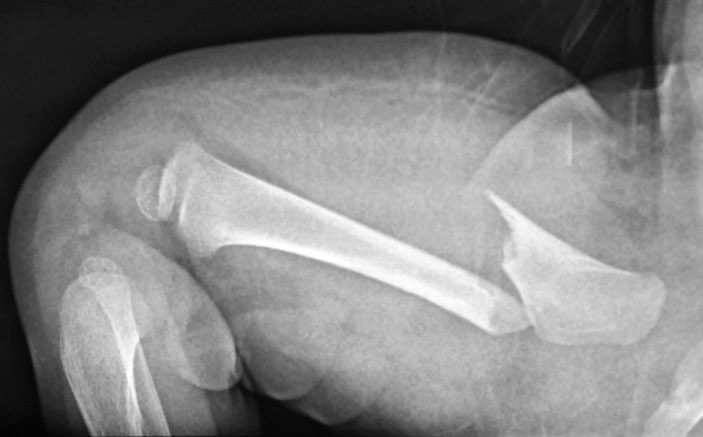Court Sense: A monthly review of important medico-legal cases
This month our case involves a two-month-old who was brought to the emergency department in 2005 when he would not straighten his right leg and cried any time that his leg was touched. X-rays were read by a teleradiologist as being normal. The child was discharged. The following day, a radiology overread noted that there may be a femur fracture and recommended follow up x-rays. The discrepancy was called to the emergency department, but the attending at the time did not contact the child’s family. Three weeks later, the child was brought back to the emergency department with seizures and an altered mental status. During that visit, the child was diagnosed with a skull fracture and intracranial bleeding. During a subsequent investigation the patient’s father admitted that he became frustrated when the child would not stop crying, picked the child up out of his crib and threw him down. The child developed permanent brain damage. In 2008, the father was sentenced to eight years in prison. Several years later, the emergency physicians were sued for failing to recognize the femur fracture and for failing to report injuries suspicious for child abuse. After only six hours of deliberation, the jury awarded the child $45 million in damages, including $15 million against the attending who didn’t follow up on the abnormal x-ray and $2 million against the attending who discharged the patient after a normal x-ray report. No liability was apportioned against the radiologist who initially missed the femur fracture. Burgos-Bonilla v. Diorio
Lessons to Learn
1. If you have a suspicion that child abuse may have occurred, report it!
While requirements vary between states, every state has laws that require reporting of actual or suspected child abuse. Many states impose criminal penalties and fines of up to $10,000 for failing to report – in addition to any monetary damages caused by failure to report. However, all states provide immunity from liability for those who make good faith reports of child abuse. Good faith is generally defined as “having reason to believe that the child in question was being subjected to abuse or neglect.” There is no immunity for bad faith or false reports and many states impose criminal penalties for false reporting (FL, IL, TN and TX may classify false reporting of child abuse as a felony). For more information about reporting requirements in your state, check the web site www.childwelfare.gov. Remember that, as in this case, the determinations may be made months or years later, so if you decide that a child’s injuries were not due to abuse, make sure to document your rationale. If you do decide to report, inform the parents that reporting is a legal requirement and that doing so is not necessarily an accusation against them personally.
2. Be familiar with abuse-prone injuries
Bruising that is not over bony prominences or bruising in patterns, injuries that are inconsistent with a parent’s story or inconsistent with a child’s age (i.e. nonambulatory infants can’t “fall”), rib fractures or fractures of differing ages, and retinal hemorrhages are just some of the injuries that should considered as potentially resulting from abuse.
3. Follow up on radiology discrepancies
In this case, the attending that didn’t follow up on an important radiology discrepancy was hit with a $15 million judgment. That’s one expensive missed message.
4. The statute of limitations is often extended for children
Although many states require that a medical malpractice case be filed within two years of the alleged malpractice, in most cases, the statutes are extended for children. In this case, the injury occurred in 2005, but the lawsuit verdict was handed down in 2017 (I was unable to find the date that the case was filed). Make sure that your employer includes adequate tail insurance with any contract you sign – this is a standard provision in all emergency medicine contracts!




1 Comment
very good article Bill. concise , and clear. and frightening for several reasons.